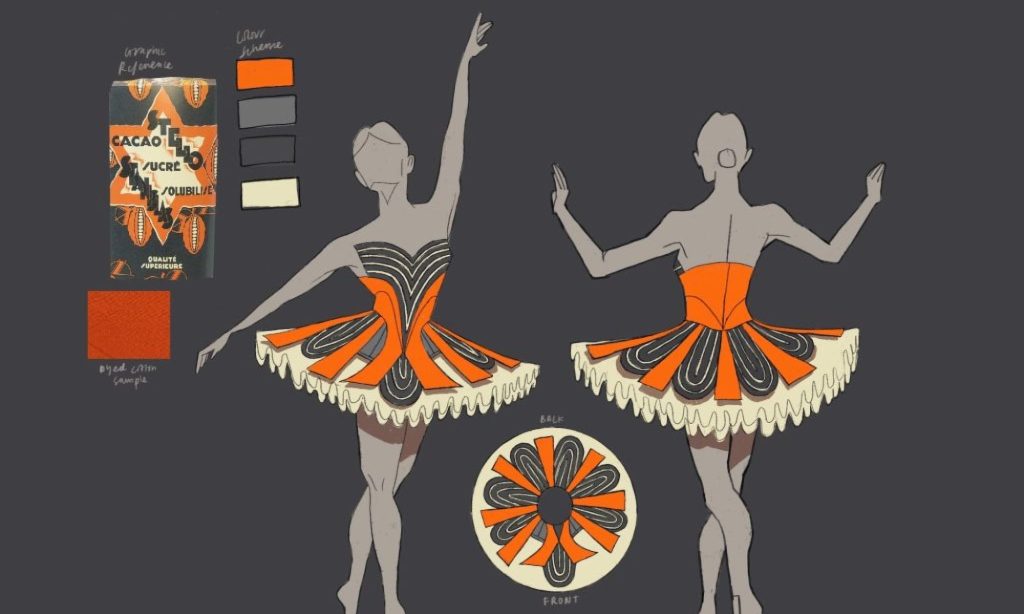Because the construction for the shaping of the tutu is more complex than the decoration of it, it has taken me almost the entirety of this week to pattern a shape for the bodice that resembles the design I have been given. We have all been given a standard bodice pattern as a starting point and I began making alterations by drawing in pencil where I think the new pattern should be. This looks very messy though and isn’t very clear where I should cut, so I drew over the final lines with a permanent marker.
The idea is that the basque of the tutu will form the shaping at the lower half of the bodice so I cut the bodice to be quite high thinking this would give the right shaping that is shown on the design. I forgot to take any photos of the bodice at that stage but there was hardly any fabric and it didn’t sit on the mannequin nicely. Instead, I chose to revise the pattern, using one of the pencil lines I had marked lower down as a reference. If I choose to keep the basque forming the lower shaping on the bodice then this may still change but for now the bodice has quite a nice shape.
While patterning the bodice, I also wanted to start making the decoration that will be appliqued onto it because they should form a single line at the armpit. In the process of forming this shape I found that the bodice sits too high at the front and didn’t allow the decoration to have enough height at the edges, so I have now pinned the front of the bodice lower so that I can continue making alterations at a later date.
I am not confident how I will continue with the bodice so I am taking a short break to continue working on the tutu plate. After having all of the layers prepared, the next stage is to sew the knickers. There is a standard pattern for this that has been traced onto paper, traced again onto the fabric for the knickers and then the markings are permanently sewn in place so that it is easy to see where the layers need to be sewn to. I will come back to this next week to properly finish the knickers but this is the stage I have left them at.

